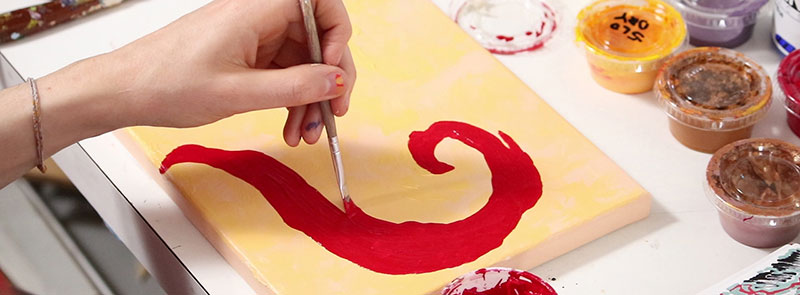Prompt
- Show a moment of drama with any members of your family.
- Drama can take many forms: a forceful argument, a quiet moment, the anticipation before an event happens.

Tips
- Don’t worry about achieving a likeness of the family members.
- The larger objective of the prompt is to explore the dynamics that are occurring between the family members.
- Facial expressions are just one visual tool you can use.
- A gesture in a person’s arm, a chair that is knocked over, can be just as effective as a facial expression.
- Consider point of view: as a viewer, are we right there in the scene, during an argument? Are we as the viewers, the person being yelled at?

Lighting
- Lighting can determine the mood of the artwork.
- Think about what lighting situation is a good fit for the scene.
reference photo tips
- Exaggerated, dramatic facial expressions might be useful to convey this narrative.
- It’s highly unlikely you’ll be able to get reference photos of that family member making a specific facial expression.
- Instead, shoot many photos of yourself making the facial expression, and then combine that with a photo of the family member.
Examples
Illuminated Manuscript: Cain & Abel, Caravaggio, Shmuel Shapiro, Edvard Munch, The Sacrifice of Isaac, Filippo Brunelleschi & Lorenzo Ghiberti, Maggi Hambling, Victorian Illustration, Carl Schleicher
brainstorming & Sketching
- Create mood boards.
- Brainstorm with key words, image searches, mind maps, etc.
- Draw at least 6 thumbnail sketches.

art media & format
- Use any art media, 2D and/or 3D.
- You might consider a format that allows for multiple images in a single artwork: a triptych, a 4 panel comic, etc.
Character Design: Facial Expressions
Drawing a wide range of facial expressions is a great skill for character design! In this drawing tutorial, prompts for different facial expressions are provided: confused, furious, disgusted, heartbroken, and flirty.
This video explores different ways of achieving a expression with Procreate. Demo led by Teaching Artists Deepti Menon and Jordan McCracken-Foster.
Light & Shadow in Portrait Painting
This video explains how lighting can be used in paintings to show form in a portrait. You’ll see how to break down the specifics of light and shadow: direct light, reflected light, shadow core, types of shadows, how light effects color.
Lighting can establish a mood or narrative for a painting, and more. Lecture by Art Prof Clara Lieu.












